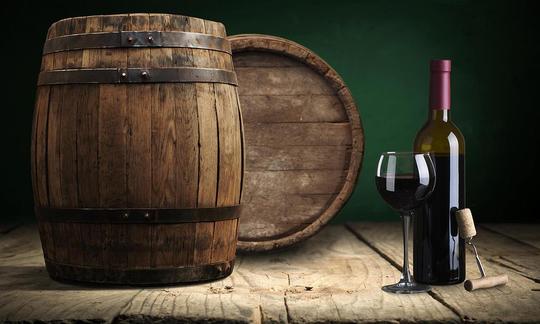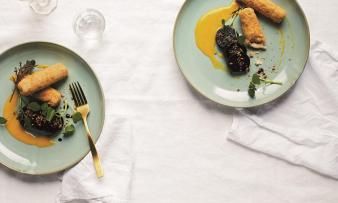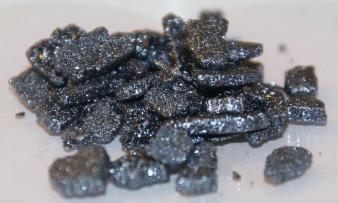Table of contents
Port wine , also called port , is a sweet dessert wine. Due to its special production process, port wine contains a higher alcohol and sugar content than red or white wine .
Use in the kitchen
What is port wine? Port wine is a sweet dessert wine with a protected designation of origin and comes from the Douro Valley in Portugal. It is made from various grape varieties of the noble grape vine ( Vitis vinifera subsp. vinifera ).
Depending on the variety, port tastes from fruity to nutty. Red port wine is often drunk neat with dessert (digestif), often with cheese and fruit bread. White port is also occasionally drunk as an aperitif before a meal.
Port wine can also be bought in organic quality, but opinions are divided on the term "raw food". Port wine is raw in the sense of raw food, but some use the term raw food only for unprocessed foods such as fresh fruit and vegetables. Others are satisfied with the maximum heating temperature of under 42 (US 47) °C. Port wine is not heated.
Port gives many dishes a special flavour. It is suitable as an addition to stew vegetables, to refine sauces, to salad dressings, jams or chutneys and to caramelise fruit. Popular desserts made with port wine are port wine plums, port wine prunes, port wine marzipan stollen or port wine figs. Port wine also tastes good in savoury dishes, for example with aubergines with miso . Mulled wine ("hot port") made from ruby port is also popular and is heated slightly with a little water, cinnamon, cloves and sugar. Cheaper qualities (simple ruby ports and tawnys) are also suitable for cooking.
Vegan recipe for port wine figs
Ingredients (for 4 people): 1 vanilla pod , 500 g dried figs , 0.5 dl lemon juice , 6 dl port wine, 1 glass with a volume of 1 l (or two smaller glasses).
Preparation: Halve the vanilla pod lengthways and scrape out the seeds. Remove the stalks from the figs. Bring the vanilla pod to the boil with the scraped seeds, the lemon juice and the port wine. Add the figs and cover and cook for 10 minutes.
In the meantime, rinse a 1-litre glass with hot water. Fill the jars with the figs and the port wine liquid and close them immediately. Leave the figs to steep for at least a week. Over time, the figs will absorb some more liquid. If they are no longer covered with liquid, add a little more port wine. The figs will keep for at least 6 months if unopened.
Vegan recipes with port wine can be found under the note: " Recipes that have the most of this ingredient ".
| Not only vegans or vegetarians should read this: Vegans often eat unhealthily. Avoidable nutritional mistakes . |
Purchasing - Storage
Port wine can occasionally be found in the range of large retailers such as Coop , Denner , Volg , Spar , Aldi , Lidl , Rewe , Edeka , Hofer , Billa, sometimes even in organic quality. Migros sells port wine through its online shop. You can sometimes buy port wine in organic supermarkets such as Denn's Biomarkt and Alnatura . More exclusive and prestigious port wines can be found online or in specialist shops. Port wines are available all year round .
The availability of Portuguese port wine varies depending on the size of the store, catchment area, etc. If you are interested, click on our recorded food prices for the DA-CH countries (above under the ingredient image). There you will find current prices from various supermarkets and their price development.
Storage tips
Sealed port wines should be stored lying down in a dark room, ideally at 10-12 °C, max. 15 °C. Ruby wines mature in the bottle, which is why they can be stored unopened for years. Tawny wines mature in barrels and are bottled ready to drink. They are not intended for bottle storage, but should be drunk soon after bottling (date on the label).
How long does port wine last? The shelf life of opened port wine depends on the type of production. Ruby wines react more quickly to oxygen (oxidation) because they were previously "protected" from it in the bottle. Opened Ruby wines should be drunk within a few days to a few weeks. Tawny wines are subject to an oxidation process in the barrel, which is why they react less strongly to oxygen than Ruby Port. The taste remains stable for longer after opening, which is why opened Tawny wines can be stored open for several weeks to months. In general, the longer the wine has matured, the more susceptible it is to oxygen and the sooner it should be drunk after opening. For example, vintage port should be drunk within a day. Opened port wine should be stored in a cool, dry place, ideally in the refrigerator or wine cabinet. 4
Ingredients - Nutritional values - Calories
100 g of port wine contains an energy content of 153.7 kcal. The sugar content is 12 g/100g and the alcohol content 14.8 g/100g. It is fat and protein free. 1 Port wine has an average alcohol content of 19 to 22% vol. 2
It contains small amounts of iodine , potassium , iron and zinc . 1 If you compare the nutrient composition with that of grapes , it becomes clear that these decrease during the production of port wine. The potassium content in grapes, for example, is 191 mg/100g, while in port wine it is only 75 mg/100g. 1 Only the copper content in port wine is very high (10 mg/100g). This corresponds to 1000% coverage of the daily requirement. 1 Large amounts of copper are excreted through the bile. Copper is not one of the critical trace elements and deficiency symptoms only occur in most cases when there is an accompanying illness. 3
Red table wine contains fewer calories (85 kcal/100g) and less sugar (0.62 g/100g) than port wine. 1 The alcohol content is lower, averaging 12-14.5% vol. 17 White table wine contains even fewer calories (82 kcal/100g). The sugar content is slightly higher in white wine (0.96 g/100g) than in red wine. 1 White table wine contains an average of 11.5-14% vol. 17
The complete ingredients of port wine, the coverage of the daily requirement and comparison values with other ingredients can be found in our nutrient tables below the ingredient image.
Effects on health
The effect of wine consumption on health has been the subject of a long-standing debate. Several epidemiological studies show that people with low to moderate consumption of alcoholic beverages have a lower risk of cardiovascular disease and a reduction in overall mortality (death rate) than people who do not consume alcoholic beverages or who consume large amounts. 13,14,15 The effect was observed with the consumption of (red) wine, beer and spirits. Therefore, the effect could also be due to the alcohol and not to the bioactive substances contained in the wine, as is suspected. 15,16
You can find detailed information under the link to the ingredient red table wine .
Is port wine healthy? Port wine contains more alcohol and sugar than other wines. The potentially health-promoting effects of moderate wine consumption (as described above) should not be overestimated. Long-term consumption of alcoholic drinks and sugary foods, especially in large quantities, leads to long-term and sometimes life-threatening negative consequences. If you generally eat healthily and occasionally treat yourself to small amounts of port wine as a special treat, this is not a problem. However, port wine does not have any special health benefits.
Dangers - Intolerances - Side effects
Port wine contains more alcohol than other wines. Humans have a mechanism for breaking down alcohol (ethanol). However, this is geared towards minimal amounts and not the ethanol content that is common in alcoholic beverages. The main place where ethanol is broken down is the liver. There, certain enzymes (alcohol dehydrogenase ADH) oxidize the ethanol to toxic acetaldehyde, which in turn is further oxidized to acetate by other enzymes (aldehyde dehydrogenase ALDH). Long-term and high alcohol consumption can lead to liver damage (fatty liver and cirrhosis). Other consequences can include reflux (heartburn), high blood pressure, obesity, damage to the nervous system and an increased risk of cancer. 3 Port wine also contains large amounts of acetaldehyde, which is produced during the production of the wine. Acetaldehyde is considered carcinogenic. 12
Wine contains histamine. Alcohol is also a histamine liberator, meaning it releases the histamine stored in the body. People with histamine intolerance should limit or avoid alcohol consumption. 7
Folk medicine - natural healing
Port wine and other alcoholic beverages were also known as "medicine" until the 19th century. Doctors prescribed port wine to help people recover and recover from debilitating illnesses. 11 Certain port wines still bear names like "Old Invalid" today.
Ecological footprint - animal welfare
The ecological CO 2 footprint of wine in general depends, among other things, on grape production and processing, transport routes and packaging. There are no studies that specifically deal with the ecological footprint of port wine. In a 2020 study for products in Germany, an amount of 1.0 kg CO 2 eq was calculated for 0.75 liters of wine in a disposable glass bottle, which means 1.33 kg CO 2 eq are produced per kg of wine. 18 Since port wine comes from Portugal, the transport route is significantly longer and the amount of emissions produced is probably higher. The largest contribution to the emissions generated comes from both wine growing and the use of glass bottles as packaging material. 19
The amount of water needed to produce 1 kg of wine is 869 litres, slightly more than for the production of grape juice (675 litres). 20 A large part of this water is used to grow the grapes. This is a particularly big problem in countries that are already struggling with water shortages due to climatic conditions and have to resort to artificial irrigation to irrigate the grapes (for example Italy). 21 With the future prospect of rising temperatures and increased droughts as a result of climate change, wine growing in Central Europe, and thus also Portugal, is facing a challenge. 22
In order to promote biodiversity in viticulture, one can, for example, refrain from mowing and mulching the vineyard rows and sow wild flowers, as is already practiced by some winegrowers. 23
Worldwide occurrence - cultivation
The commercial production and distribution of port wine emerged during the 17th century and experienced a further boom in the 18th century. 8 The term "port wine" is an internationally protected designation of origin. Therefore, only wines that meet the criteria of the Port Wine Institute (Instituto do Vinho do Porto) receive the official seal. 6 For example, the grapes must come from a clearly defined area (Região Demarcada) in the Douro Valley in northern Portugal. Only certain grape varieties are permitted for the production of port wine.
Cultivation - Harvest
Port wine is made from the berries of the noble grape vine (Vitis vinifera) . Information on the cultivation of grapes can be found under the link.
Harvesting and vintage were traditionally done by hand and in Europe between September and November. After harvesting, the grapes are sorted and the stalks and vines are separated from the grapes. Nowadays, this is sometimes done mechanically using a vibrating and shaking technique. 9
Industrial production
Port wine differs from other wines in terms of taste and production. After the harvest and vintage, the grapes are crushed by grinding (mashing). The grape seeds must not be damaged in the process, as otherwise tannins will be released, which make the wine bitter. The mash is a mixture of juice and solid grape components. The mash is sometimes sulphurised to inhibit enzymes. 9 In the past, the grapes were produced in flat stone vats (lagars) directly on the vineyard site. Nowadays, the wine is produced by regional cooperatives with modern crushing, pressing and fermentation systems (fermentation). 8 In order to imitate the traditional technique of "treading wine" in the stone vats, robots with large knives are increasingly being used to crush the grapes. 2
The addition of certain yeast strains (wine yeasts) causes the mash fermentation to take place. 8,9 Unlike other types of wine, fermentation in port wine is stopped after 2 to 3 days. 2 The addition of brandy, wine distillate or pure ethyl alcohol (77% ethanol) stops the fermentation so that the sugar content in the port wine remains high. This is called "fortification" or "foraging". The enrichment increases the ethanol concentration to 19–20.5%. 8 The mash is then pressed, i.e. the juice (must) is separated from the solid press residue (pomace). The wine is then vinified, stored and aged. Port wine is aged in large wooden or cement tanks or oak barrels. The type and duration of the ageing depends on the type of port wine intended. 8 Tawny port is aged in barrels, which can cause the wine to oxidise slightly. It is not bottled until it is ready to drink. Ruby port, on the other hand, is aged in bottles in the absence of oxygen. 2 Opened ruby port is therefore more susceptible to changes in taste due to oxidation than tawny port.
Further information
Port wine is made from grapes from the grapevine ( Vitis vinifera subsp. vinifera ). This belongs to the genus of grapevines ( Vitis ), which are part of the grapevine family ( Vitaceae ).
Depending on the grape variety, a distinction is made between white and red port, or rosé port. A distinction is also made according to the production process and storage time, including Ruby (bottle storage) and Tawny (barrel storage). Vintage Port is the rare and high-quality top-class port wine. Port wine is always a blend of at least four grape varieties. 10
Alternative names
Port wine is also called Port or Porto. The wine gets its name from the Portuguese port city of Porto, where port wine was traditionally stored for maturation and where international distribution was organized.









Comments